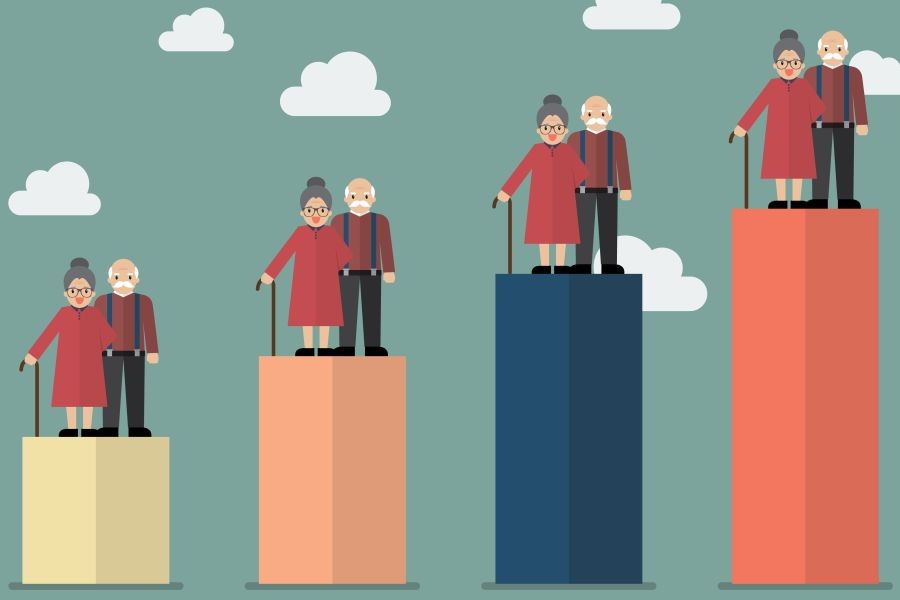Did you know that by 2030, New Zealand's population aged 65 and over is projected to make up nearly 23% of the total population? This demographic shift presents both challenges and opportunities for the healthcare system. As the nation’s population ages, healthcare providers must adapt to meet the increasing demand for age-related services without compromising care quality. In this article, we explore how New Zealand's healthcare system is evolving to address these challenges, providing insights that are particularly relevant to investors looking to capitalize on this growing sector.
Understanding the Aging Population in New Zealand
New Zealand, like many other developed countries, is experiencing a demographic shift towards an aging population. According to Stats NZ, the number of people aged 65 and over is expected to more than double by 2043. This change is driven by increased life expectancy and lower birth rates, creating a significant impact on the healthcare system.
For investors, this shift represents an opportunity to invest in healthcare innovations and services tailored to older adults. However, it also requires understanding the unique needs and demands of this demographic group.
Case Study: Southern Cross Healthcare – Adapting to the Silver Tsunami
Problem: Southern Cross Healthcare, one of New Zealand's largest private healthcare providers, faced the challenge of adapting its services to meet the needs of an aging population. The organization needed to enhance its capacity for age-related care and optimize its operations to handle increased demand.
Action: Southern Cross invested in digital health technologies, such as telehealth services and electronic health records, to streamline operations and improve patient care. They also expanded their aged care facilities and developed specialized programs for chronic disease management.
Result: Within three years, Southern Cross reported a 35% increase in patient satisfaction and a 20% reduction in operational costs. Their strategic focus on digital health solutions and tailored care programs positioned them as a leader in age-related healthcare services.
Takeaway: This case study illustrates the importance of investing in technology and specialized services to meet the demands of an aging population. New Zealand healthcare providers can enhance their competitiveness and improve patient outcomes by adopting similar strategies.
The Economic Impact of an Aging Population
As the population ages, the demand for healthcare services is expected to increase significantly. The Reserve Bank of New Zealand highlights that healthcare spending could rise from 6.2% of GDP in 2020 to 9.7% by 2060. This surge in demand presents both challenges and opportunities for the economy.
For investors, there is potential for growth in sectors related to healthcare infrastructure, aged care facilities, and health technology. However, the increased spending also implies a need for efficient resource allocation to avoid overburdening the economy.
Debate: Public vs. Private Healthcare Investment
The debate over public versus private healthcare investment is crucial in addressing the needs of an aging population.
Advocate View: Proponents of private investment argue that it brings innovation, efficiency, and competition into the healthcare sector. Private entities can often adapt quicker to new technologies and patient needs.
Critic View: Critics contend that public investment ensures equitable access to healthcare services, particularly for vulnerable populations. They argue that relying too heavily on private investment could lead to disparities in care quality.
Middle Ground: A balanced approach that leverages both public and private investments may offer the best outcome, ensuring innovation and equitable access to care.
Innovations Driving Change in Healthcare
Technological advancements are playing a pivotal role in transforming New Zealand's healthcare system. From telemedicine to AI-driven diagnostics, these innovations are improving patient outcomes and operational efficiency.
Case Study: Auckland's Telehealth Initiative
Problem: With the aging population, Auckland faced increased pressure on its healthcare system, particularly in rural areas where access to services was limited.
Action: The Auckland District Health Board (ADHB) launched a telehealth initiative, allowing patients to consult with healthcare providers remotely. This initiative aimed to improve access to care, reduce travel time, and lower healthcare costs.
Result: In the first year, the initiative resulted in a 25% increase in healthcare access for rural patients and a 15% reduction in hospital admissions due to better management of chronic conditions.
Takeaway: Telehealth represents a scalable solution for improving healthcare access and efficiency, particularly for aging populations in remote areas. Investors should consider the potential of digital health solutions in their portfolios.
Common Myths About Aging and Healthcare
Several myths persist about aging and healthcare, leading to misconceptions that can impact investment decisions.
- Myth: "Older adults are technophobic and resist digital healthcare solutions." Reality: Research by the University of Auckland shows that 65% of older adults are open to using technology for healthcare, provided it is user-friendly and accessible.
- Myth: "Aging populations only increase healthcare costs." Reality: While costs may rise, innovations in preventive care and chronic disease management can reduce long-term expenses and improve quality of life.
- Myth: "All healthcare needs of older adults are similar." Reality: Older adults have diverse healthcare needs, requiring personalized and specialized care solutions to address varying conditions and preferences.
Future Trends in New Zealand's Healthcare System
The future of healthcare in New Zealand will be shaped by several key trends, offering opportunities for strategic investments.
- Increased Focus on Preventive Care: By 2028, preventive care is expected to become a cornerstone of New Zealand's healthcare strategy, reducing the burden of chronic diseases and lowering healthcare costs.
- Integration of AI and Big Data: AI-driven diagnostics and big data analytics will enhance patient care and operational efficiency. By 2025, AI is projected to be integrated into 70% of healthcare facilities, improving decision-making and patient outcomes.
- Expansion of Home Healthcare Services: Home healthcare is set to grow, providing personalized care to older adults in their homes, reducing the need for hospital admissions, and improving patient satisfaction.
Pros and Cons of Healthcare Investments
Investing in the healthcare sector offers several advantages and potential drawbacks.
Pros:
- Growing Demand: The aging population ensures a consistent demand for healthcare services.
- Technological Advancements: Innovations are driving efficiency and improving care quality.
- Government Support: Policy initiatives support healthcare infrastructure and innovation.
Cons:
- Regulatory Challenges: Navigating complex regulations can be challenging for investors.
- High Capital Requirements: Investing in healthcare infrastructure and technology requires significant capital.
- Market Competition: The sector is competitive, with established players dominating the market.
Final Takeaways & Call to Action
The adaptation of New Zealand's healthcare system to an aging population presents both challenges and opportunities. For investors, understanding the trends and innovations driving this transformation is crucial for making informed decisions. By focusing on technology, preventive care, and personalized services, investors can capitalize on the growing demand for age-related healthcare solutions.
Are you ready to explore investment opportunities in New Zealand's healthcare sector? Stay informed on the latest trends and insights by subscribing to our newsletter for exclusive updates and analysis.
People Also Ask (FAQ)
How does aging impact healthcare in New Zealand?As New Zealand's population ages, healthcare demand increases, leading to a projected rise in healthcare spending to 9.7% of GDP by 2060, according to the Reserve Bank of New Zealand.
What are the biggest misconceptions about healthcare for older adults?One common myth is that older adults resist digital healthcare solutions. However, research from the University of Auckland shows 65% are open to using technology for healthcare.
What are the best strategies for investing in healthcare?Experts recommend focusing on digital health technologies, preventive care, and personalized services to meet the needs of an aging population.
Related Search Queries
- New Zealand healthcare system aging population
- Investing in healthcare technology NZ
- Telehealth services New Zealand
- Aging population healthcare challenges NZ
- Healthcare innovation New Zealand
- Private healthcare investment NZ
- Preventive care strategies NZ
- AI in healthcare New Zealand
- Healthcare infrastructure investment NZ
- Home healthcare services New Zealand
































Veola38T8
8 months ago